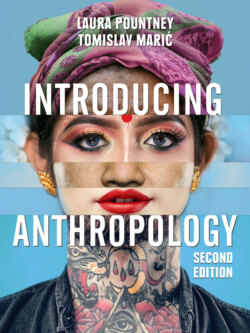Читать книгу Introducing Anthropology - Laura Pountney - Страница 121
Skin colour bias
ОглавлениеSkin colour bias originates from the history of slavery and racial oppression. An American Sociological Society paper explains: ‘To justify racial slavery, slave-holding interests promoted a white supremacist ideology which held that persons of African descent were innately inferior to whites. Whiteness became identified with all that is civilised, virtuous and beautiful’ (Hill 2002). Pale skin became desirable because, for hundreds of years, it was associated with wealth and status.
Skin lightening, or skin bleaching, is a cosmetic procedure that aims to lighten dark areas of skin or achieve a generally paler skin tone. Skin bleaching has become a widespread global phenomenon, and in the UK is mainly used by people from African, Caribbean and Asian communities. The trend of skin bleaching is not harmless. People who are already socially and financially marginalized may end up spending a significant amount of money on products that they can hardly afford. Many skin whiteners are associated with proven skin damage or other health risks. Some countries, such as Ghana and Rwanda, have banned skin whitening products. However, whitening remains popular and, according to Statistics MRC, the global market for skin-lightening products accounted for $4075.00 million in 2017 and is expected to reach $8011.17 million by 2026.
The whole notion of desiring paler skin relies upon and emphasizes toxic ideas of white superiority. It was during the height of colonialism and the rise of ‘scientific racism’ (the pseudoscientific idea that empirical evidence supports notions of racial superiority and inferiority) during the eighteenth and nineteenth centuries that white skin became even more desirable. Whiteness came to signify not just personal privilege but also belonging to a privileged group; dark(er) skin, meanwhile, was linked to racial inferiority and slavery. Whether in apartheid South Africa or the segregationist USA, whiteness, in the words of critical race scholar Cheryl Harris (1993), ‘became the quintessential property of personhood’. Nina Jablonski (2012) writes that ‘untanned skin was a symbol of the privileged class that was spared from outdoor labour. Dark-skinned people were deprecated because they were of the labouring class that worked out in the sun.’ Colourism, as sociologist Margaret Hunter (2007) calls it, is prejudice involving the preferential treatment of people with light skin within and between ethnic groups. This is seen especially in areas such as income, education, housing and the marriage market. Colourism is directly related to a larger system of racism.
colourism Prejudice involving the preferential treatment of people with light skin within and between ethnic groups
Fair & Lovely: Billboard advertising skin-whitening cream in Chittagong, Bangladesh.
(© Adam Jones / flickr)
Perhaps an increasing awareness of internalized ideas about whiteness, and their origins in the history of racism, combined with the modern push against discrimination based on skin colour, will increase acceptance of all skin tones around the world. But there is a long way to go before this hierarchy is likely to be overturned and before ideas that run so deep that many people aren’t even conscious of holding them are likely to change.
